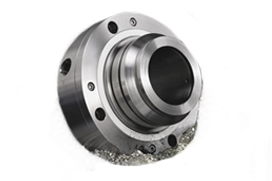Mechanical seals are composed of many unique parts formed from various materials. Steel, various rubbers, silicon, carbon, PTFE – these are just a few examples of the types of materials that may be present in just one mechanical seal. Due to the diverse material properties and the precise, delicate nature of these devices, it’s important to understand how long a seal can be stored safely without compromising function.
If the mechanical seal is stored in a clean, temperature/humidity controlled environment, you can effectively keep these seals safely for five years if the proper procedures are followed.
Mechanical Seal Storage Conditions
To ensure this shelf life, especially for ‘O’-rings, environmental conditions must be:
- Room temperature between 5°C (40°F) and 25°C (80°F) with humidity below 70%
- Free of radiation, particularly sunlight
- Free of contamination (pumped products, solvents, oils, copper)
- Free of ozone and ozone-generating devices and equipment
Mechanical Seal Storage Procedures
To prevent face lock and loss of face flatness, rotate the seal faces against each other (by rotating the sleeve or shaft) two turns every three months if the seal is not used in operation during that time.
Storing a seal for less than two years: Store in a clean, cool environment and rotate the faces against each other approximately two rotations every three months.
A new seal on a shelf for more than two years OR a seal that’s been in service already and will be stored for more than 1 year:
- Disassemble the seal and store all parts as individual components. Ensure ‘O’-rings are in a relaxed state and meet the environmental conditions outlined above.
- Plug all openings in the seal’s gland as well as the unused pump’s seal chamber
- Do not store seal faces (silicon/carbon/tungsten) in the same container. Separate the faces into two different bubble-wrapped containers.
Reassembling:
- Check ‘O’-rings for cracks, cuts, wear and lubricate ‘O’-rings for easier assembly.
- If ‘O’-rings are damaged or have experienced compression set, replace them.
- Check mating ring / seal ring for cracks or chips, especially on the sealing faces. If damaged, contact us for a replacement.
This is an outline of a few of the basic recommendations for storage and reintroduction to service for a mechanical seal. For more detail, see international standards such as DIN 7716 and ISO 2230, which detail fundamental instructions on the storage and maintenance of elastomeric seal elements.

